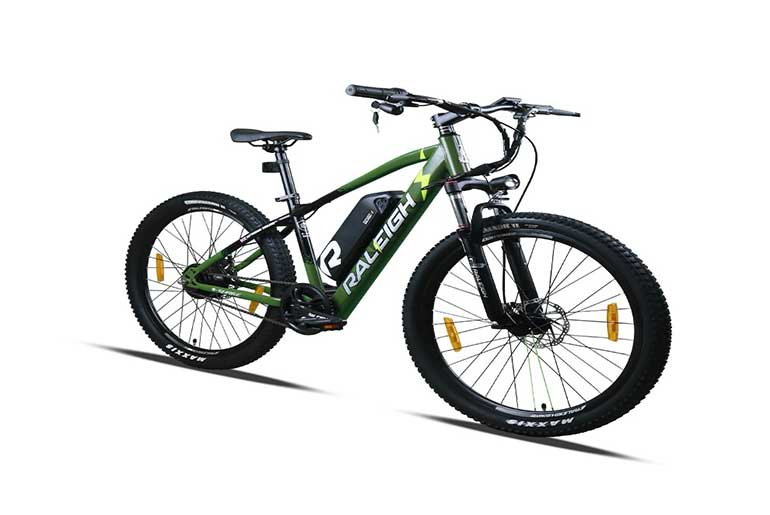With the introduction of the Raleigh ONE, a stylish, intelligent e-bike specifically targeted at the European urban mobility market, Raleigh is beginning a new era in its lengthy history of bicycle creation. The Raleigh ONE, which was formally launched, blends contemporary connected technology with traditional British riding traditions to provide what the firm refers to as “the only e-bike you’ll need in the city“.
Raleigh is also providing a subscription program to unlock additional features, following Big Tech’s lead. Will riders, however, pay or object?
Although the Raleigh ONE is making its debut in Germany, the Netherlands, and the UK, it appears to be made with a global audience in mind. This minimalist-style, one-size, one-speed urban e-bike is constructed with premium parts and a number of clever features that can be accessible through an app and membership system.
Imagine it as a hybrid of a Silicon Valley tech platform and a classic European utility bike.
Let’s start by discussing what makes it an e-bike before moving on to that technology. The Raleigh ONE has a 360 Wh detachable battery that provides a range of up to 80 km (50 mi) in eco mode and about 50 km (31 mi) in boost mode. One of the finer and more advanced rear hub motors available is the 250W Mivice, which is powered by that battery. The top aided speed is 25 km/h (15.5 mph), which complies with European e-bike standards.
The bike has hydraulic disc brakes for sure stopping force and a Gates carbon belt drive for low-maintenance, grease-free operation.
With a dual front beam and wraparound rear lights, the lighting is completely integrated and smart-enabled. Even on uneven roads, the Raleigh ONE’s upright shape, wide tyres, and riser bars provide a comfortable riding posture for all-day city use.
Raleigh’s new software, which serves as a digital control centre for ride statistics and security features, can be used hands-free thanks to the bike’s SP Connect attachment for the rider’s phone.
With the Raleigh ONE, Raleigh is making a significant investment in connectivity. Users can activate auto-unlocking, journey tracking, alarm features, GPS location, and theft warnings after registering using the app. Wireless updates are supported by the system, and handlebar buttons or the app itself are used to control security features.
In 2025, the Raleigh ONE joins a growing trend of connected e-bikes by introducing a subscription plan that allows users to access some of its most appealing features, such as sharing digital unlock access.
- Base (free) with essential features including a ride dashboard, “basic security”, Bluetooth updates, and a manual stolen mode.
- Core (€7.99/month) with expanded services including automatic stolen mode activation, smart maintenance, and bike sharing access for one additional rider.
- Icon (€14.99/month) includes all of the above plus over-the-air updates, bike sharing access for up to four other riders, remote arming, and full insurance coverage (provided by Hepster).
Although memberships are not required, the more sophisticated features—particularly those related to security and insurance—are protected by a paywall. Raleigh provides a 30-day free trial of the Icon plan to help you get hooked, just like your friendly neighbourhood dealer. The premium programs also have cheaper annual prices for individuals who are prepared to get right in.
The Raleigh ONE, which retails for €2,699/£2,399, places itself competitively with other high-end urban e-bikes, such as those recently introduced by VanMoof, especially when you take into account its features like belt drive, integrated lights, fast charging (50% in 1 hour, full in just over 2 hours), and theft protection ecosystem.
Raleigh’s dealer network and after-sales support are among its most notable features, giving it a significant edge over many e-bike startups that simply sell their products online. When you consider Raleigh’s more than 130-year history in the cycling industry, the ONE seems like a promising choice for city riders seeking a worry-free, future-proof ride.
Accessories like front carriers, baskets, and integrated AXA locks round out the ecosystem, with more to come.
The Raleigh ONE was described as “a bold fusion of heritage and innovation” by Selin Can, EVP of Mobility at Accell Group, Raleigh’s parent company. Taking Raleigh’s long history of cycling and integrating it with a contemporary electric, digital, and app-connected future appears to be the aim.
Raleigh is attempting to regain relevance in a world of smartphones, theft alarms, and mobility-as-a-service with the introduction of the ONE, not just a new e-bike. Although many riders may be annoyed by paying more to access technology or functions that are already built into the bike, it is crucial to keep fundamental tech features free in order to avoid alienating all of its customers.
What are your thoughts? Is the Raleigh ONE an e-bike of the future or a foreshadowing of what might be seen in a walled garden in the future? Please share your opinions in the space provided for comments below.

